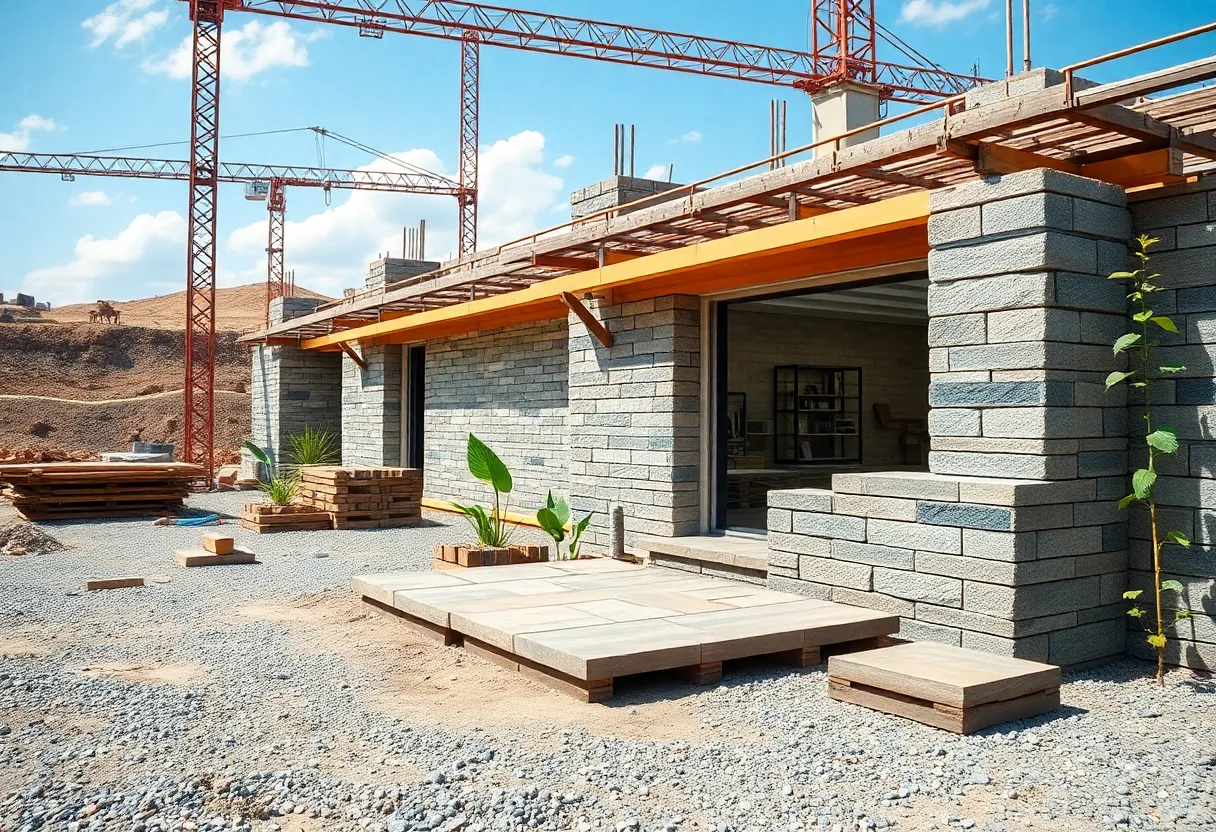News Summary
Researchers at the Colorado School of Mines are developing innovative methods to transform waste mine tailings into high-value construction materials, aiming to bolster domestic critical mineral supplies. This initiative focuses on sustainable practices while enhancing mineral recovery, offering potential solutions for environmental concerns linked with mining. By repurposing tailings, the project seeks to create eco-friendly construction resources and reduce reliance on imported minerals, promoting a circular economy within the mining sector.
Colorado Springs, Colorado — Innovative Research at Colorado School of Mines Seeks to Transform Mine Tailings into Construction Materials and Strengthen Critical Mineral Supplies
In Colorado Springs, Colorado, researchers are pioneering new methods to repurpose mine tailings—waste materials left after mining operations—into high-value construction resources, aiming to bolster domestic supplies of critical minerals. The initiative is led by Reza Hedayat, an associate professor at the Colorado School of Mines, who is developing processes targeting both environmental sustainability and economic efficiency.
Turning Waste into Opportunity: The Core of the Innovation
Mining operations generate vast quantities of tailings, which account for over 90% of the ore processed during extraction. Traditionally, these waste materials are treated as disposal challenges, contributing to environmental concerns such as land degradation, water contamination, and dust pollution. However, Hedayat’s research emphasizes viewing tailings as an untapped resource for extracting valuable components, such as critical minerals essential for technology, energy, defense, and medical applications.
The core objective is to develop processes that convert tailings into high-performance construction materials, including geopolymer bricks, lightweight aggregates, and ceramic tiles. These materials are designed to meet rigorous standards for strength, durability, and sustainability, while significantly reducing the environmental impact associated with traditional mining and construction practices.
Enhancing Critical Mineral Recovery through Reuse
The research establishes a dual-use approach—simultaneously recovering economically viable minerals and repurposing residual materials into construction supplies. Critical minerals such as lithium, cobalt, rare earth elements, germanium, and others are often present in tailings but are commonly overlooked or lost during standard processing due to economic or technological barriers. The new methods aim to unlock these elements at low cost, creating opportunities to meet increasing domestic demand.
A recent study conducted at the Colorado School of Mines highlights that nearly all critical minerals found in processed ore are present within tailings but are typically lost to waste. Recovering just less than 10% of cobalt and less than 1% of germanium from tailings could significantly enhance supplies for various U.S. markets. Improved recovery methods could enable the country to source many elements—except platinum and palladium—domestically, reducing reliance on imports.
Environmental and Economic Benefits of Tailings Reuse
Transforming mine tailings into construction materials could greatly reduce the demand for newly extracted raw materials, thereby decreasing the environmental footprint of both mining and construction industries. Such efforts align with broader sustainability goals, including lowering carbon emissions and extending the lifecycle of existing resources.
Hedayat envisions establishing local processing facilities near mine sites to minimize transportation impacts and promote regional economic development. These facilities would process tailings into durable construction products and recover critical minerals concurrently, fostering a circular economy within the mining sector.
Support from Government and Policy Implications
The research is aligned with the U.S. Department of Energy’s initiatives to increase domestic critical mineral production through value-added product development. Success in this area requires extensive collaboration among mining companies, research institutions, and government agencies. Policy support will be essential to fund pilot projects and streamline regulations for integrated recovery and reuse operations.
Broader Impacts on National and Global Markets
The findings suggest a strategic opportunity for the United States to meet much of its critical mineral demand using processing techniques applied to mine waste. As the world accelerates its transition to renewable energy and advanced technologies, secure access to these minerals is crucial. Reclaiming metals from tailings aligns with national interests and sustainability objectives, reducing imports and promoting self-sufficiency.
Elizabeth Holley, lead author and associate professor involved in the study, emphasizes that tailings represent a largely untapped resource. The research indicates that even minimal recovery from tailings could supply important segments of the U.S. market, helping to mitigate supply chain vulnerabilities heightened by current global supply disruptions.
Challenges and Future Outlook
Despite the promising potential, economic challenges remain. The current market conditions and processing costs make recovering these critical minerals from tailings less viable without further technological breakthroughs and supportive policies. Continued research, coupled with government incentives, could accelerate the commercial viability of these methods.
Looking ahead, the development of scalable, sustainable pathways for repurposing mine waste has the potential to transform the mining and construction industries—reducing environmental impact, supporting economic growth, and ensuring a more resilient supply of essential minerals needed for future technological advancements.
As this innovative research progresses, the emphasis remains on creating sustainable, local solutions that align with national strategic priorities and promote cleaner, more efficient resource utilization.
Deeper Dive: News & Info About This Topic
HERE Resources
Additional Resources
- Mines Newsroom: Reimagining Mine Waste
- Wikipedia: Mine Tailings
- Mining.com: America’s Critical Minerals in Mining Waste
- Google Search: Critical Minerals
- Earth.com: Buried Treasure in Critical Minerals
- Encyclopedia Britannica: Mining
- Chemistry World: Unrecovered Byproducts from US Mines
- Google Scholar: Mine Waste Critical Minerals
- Mining Technology: The Hidden Value of Mine Waste
- Google News: Mine Waste Recycling
Author: STAFF HERE WASHINGTON DC
The WASHINGTON DC STAFF WRITER represents the experienced team at HEREWashingtonDC.com, your go-to source for actionable local news and information in Washington, DC, and beyond. Specializing in "news you can use," we cover essential topics like product reviews for personal and business needs, local business directories, politics, real estate trends, neighborhood insights, and regional news affecting the area—with deep expertise drawn from years of dedicated reporting and strong community input, including local press releases and business updates. We deliver top reporting on high-value events such as the National Cherry Blossom Festival, Kennedy Center Honors, and the Washington Auto Show. Our coverage extends to key organizations like the Greater Washington Board of Trade and Destination DC, plus leading businesses in government contracting and technology that power the local economy such as Lockheed Martin and Amazon. As part of the broader HERE network, we provide comprehensive, credible insights into the dynamic landscape of the Washington metropolitan area.





